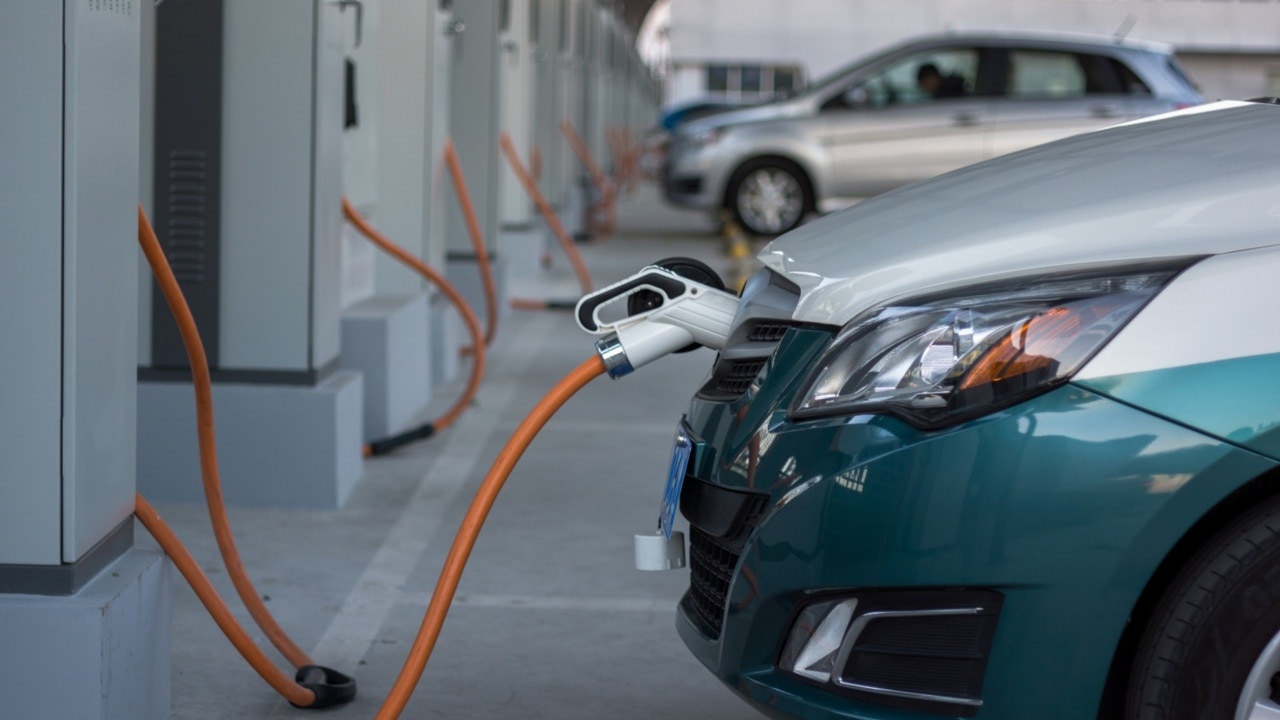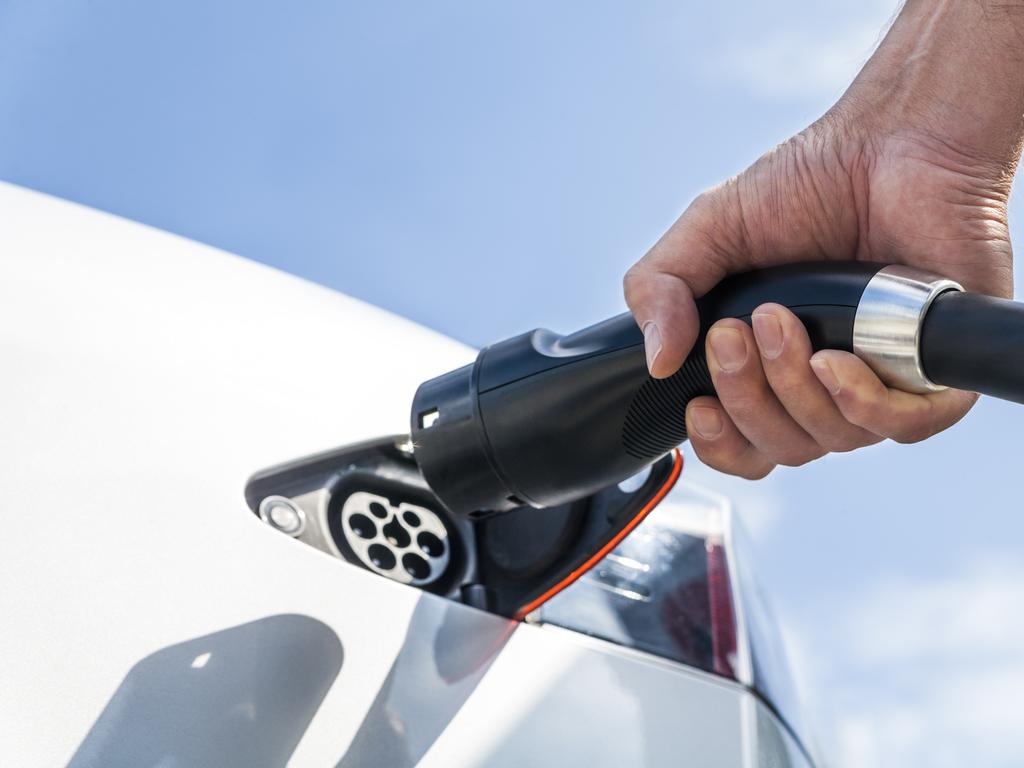Chris Bowen gambles with taxpayers’ cash to hit renewables target
Taxpayers will underwrite a five-fold increase in new government-backed renewable projects, as Chris Bowen gambles on market intervention to hit Labor’s targets.

Taxpayers will underwrite a five-fold increase in new government-backed renewables capacity across Australia, as Chris Bowen gambles on a dramatic market intervention to secure grid reliability and achieve Labor’s ambitious target of 82 per cent renewables by 2030.
The Energy and Climate Change Minister on Thursday will unveil a massive expansion of the Capacity Investment Scheme to deliver enough battery, wind, solar and pumped hydro generation to replace exiting coal-fired and thermal power sources.
The program will be expanded from its initial mandate to underwrite 6 gigawatts of renewable energy projects to 32GW, with the cost to taxpayers being kept secret under commercial-in-confidence provisions.
Amid warnings the energy transition is at risk of being held back by supply chain pressures and labour shortages, Mr Bowen will also strike deals with states and territories to fast-track major renewables projects.
Ahead of attending the United Nations Climate Change Conference in Dubai, Mr Bowen said the government was taking unprecedented action on renewables to avoid blackouts and energy price rises as coal generators shut down.
Mr Bowen, who is expected to win state and territory support at an energy ministers’ meeting on Friday, has previously conceded it would be difficult to deliver on the government’s 82 per cent renewables target.
Before the election, Anthony Albanese said targets in his Powering Australia climate change manifesto – which included a promise to lower power bills by $275 per year from 2025 – were based on existing Labor policies.
The ramp-up in government guarantees for renewables projects will be viewed by the Coalition, whose Renewable Energy Target scheme will cease in 2030, as an admission that the Albanese government’s existing renewable energy and emissions reduction policies are falling short. Without significantly increasing renewable projects in the grid or intervening to support uptake of electric vehicles, it is expected to struggle to achieve its 43 per cent emissions-reduction target and Australia’s net zero by 2050 commitments.

During last year’s power crisis, energy ministers endorsed a CIS that would support 6GW of dispatchable renewables capacity. That will now be increased to 32GW, including 23GW of new renewable capacity and 9GW of dispatchable capacity, which is the equivalent of around half of the current National Electricity Market, servicing 11 million customers.
Renewables currently contribute 28.6GW to the NEM, representing about 36 per cent of the energy mix. The government will provide an update on the renewables mix next week.
The upgraded CIS regime will not support gas-fired power and have risk mitigation built into its design. Six-monthly auctions will be run by the federal government from April next year to 2027.
Prospective project operators, who had expressed concerns around returns on investment, will nominate a floor and ceiling around projected revenues hit by fluctuating wholesale prices.
The government will guarantee baseline revenue for generators if wholesale prices dip beneath the agreed floor, and generators will pay the government an agreed percentage of revenue if it exceeds the ceiling.
Taxpayer support for CIS contracts will be on-budget but not publicly revealed over concerns that revealing financial arrangements will distort the market and affect government returns.
Mr Bowen said stronger investment in renewables would “supercharge available power in the energy grid, delivering the long-term reliable, affordable and low-emissions energy system Australians deserve as our grid changes”.
“Under the last government, 24 coal plants with a total capacity of 26.7GW announced their closure dates, but the LNP failed to deliver any policy to ensure replacement capacity. This dangerous and irresponsible approach – including their failure to deliver a capacity scheme – is one of the reasons Australia’s grid could face a difficult summer,” he said.

“In contrast, the Albanese government’s CIS underwrites new renewable generation and storage, providing certainty for renewable investors and cheaper, cleaner energy for households and businesses. It also recoups money for taxpayers when revenues are high.”
While the CIS excludes support for gas-fired power plants, states and territories will be required by the federal government to establish energy reliability plans. Jurisdictions will endorse their own energy mix, which may include gas peaker plants.
The first CIS projects were announced by Mr Bowen and NSW Energy Minister Penny Sharpe on Wednesday under a pilot federal-NSW government program.
The six projects, with a combined value of $1.8bn and promising 1GW of reliable energy, include Australia’s biggest battery to be built at Wellington and three virtual power plants consisting of a mix of energy sources.
Mr Bowen said the federal government would negotiate bilateral agreements with states and territories under the National Energy Transformation Partnership.
“Around half of the capacity offered under the expanded CIS (18 of 32GW) will be subject to these agreements,” he said.
“Capacity may be reallocated from any jurisdictions that don’t make agreements to those that do. The commonwealth will also consider barriers to renewable investment such as workforce and supply chain constraints.”
Minerals Council of Australia chief executive Tania Constable, whose members include BHP, Rio Tinto and Whitehaven, will deliver a speech in Perth on Thursday warning that “we are now seeing a seismic shift in the world’s approach to climate change”.
“There is an increasing urgency for nations to swiftly deliver on their strategies to reach 2030 emissions-reduction targets, and the subsequent pathway to net zero. Talk is over, action is now critical,” Ms Constable will say.
“But there are some profound obstacles on the road to those imminent targets. Investment in, and deployment of, renewable energy capacity remain problematic. The emerging instability in Australia’s energy grid is forcing governments to reconsider the urgency to remove coal generation.
“Investment in liquid biofuels and renewable gas is being stymied by a lack of policy framework and incentives, and the impact on private land use from new transmission capability is beginning to be realised, with lawyers at the ready.
“These constraints come at a crucial economic crossroad; a period marked with crippling cost of living pressures, continued supply chain constraints, increased geopolitical pressures in the Indo Pacific, and instability in the key geographic regions.
Ms Constable will say that “together, they could further impact on an already low-growth trend”.








To join the conversation, please log in. Don't have an account? Register
Join the conversation, you are commenting as Logout